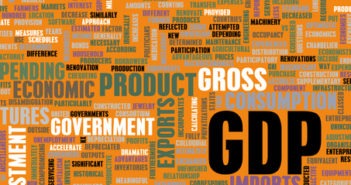Better than expected – the green on the screen masks a devastating drop of 32.9% annualized in US Gross Domestic Product in the second quarter, the worst in history. Expectations stood at -34.1%, so that counts as a beat.
Nevertheless, the statistics reflect significant suffering – a crash of 27% in business investment, a collapse of 64.1% in exports, more halving of imports, 53.1%, and a collapse of personal consumption by 34.6%.
Reopening backfires
The data shows the horrible blow dealt by coronavirus to the world’s largest economy. It is essential to note that this plunge came despite massive government support – and efforts to reopen the economy. President Donald Trump pushed governors to “reopen America” from May onwards. That worked out in economic terms, as rebounds in retail sales in both May and June have shown.
However, that hasty return to normal took a human – and economic toll. Consumers began shying away from shops from mid-June as COVID-19 infections surged. The consequent halting of loosening restrictions – and in some cases reimposing of lockdown measures – added to the economic pain later on.
The GDP data is for the three months ending in June and figures coming throughout July already show the impact of the new downturn. Both the Conference Board and the University of Michigan’s consumer sentiment gauges dropped back toward the lows of April, and the labor market is struggling as well.
Weekly jobless claims figures have been published alongside GDP data, and they show a disappointing increase in continuing applications ← topping 17 million in the week ending July 17, when Non-Farm Payrolls surveys are held. The uptick in weekly claims – one of the high-frequency figures that Fed Chair Jerome Powell was probably referring to – is already on investors’ minds.
Apart from the resurgence of the virus, it is worth returning to the government’s role. Democrats and Republicans are tussling over the next fiscal stimulus relief measures. The most critical aid is the federal top-up of $600/week to the unemployed. Without that, consumption would have been worse. The mere prospects that this help would be reduced may already have a detrimental effect on the economy.
The third quarter is unlikely to be worse than the second one – but another contraction cannot be ruled out. After a drop of nearly a third, a bounce of 50% is needed for a V-shaped recovery – a pipe dream given the virus and diminishing support from Washington.
Market implications
The US dollar has been on a downtrend in recent weeks. While US economic troubles may send safe-haven flows to the dollar, the prospects of further support from the Fed may weaken it. Currencies of countries that have more successfully fought the coronavirus may rise.
Gold and silver may remain beneficiaries as well, boosted by more stimulus.
The S&P 500 Index has been on a tear – returning to positive territory for the year. That has been the result of stimulus and perhaps vaccine hopes. However, these figures – both GDP and claims – may begin sealing a ceiling above stocks.
Are equities ready to fall? It may take time for a significant bear market to reemerge. Nevertheless, the rally’s end is nigh.
Get the 5 most predictable currency pairs
US GDP: Could have been worse, but will not improve, winners and losers in markets
